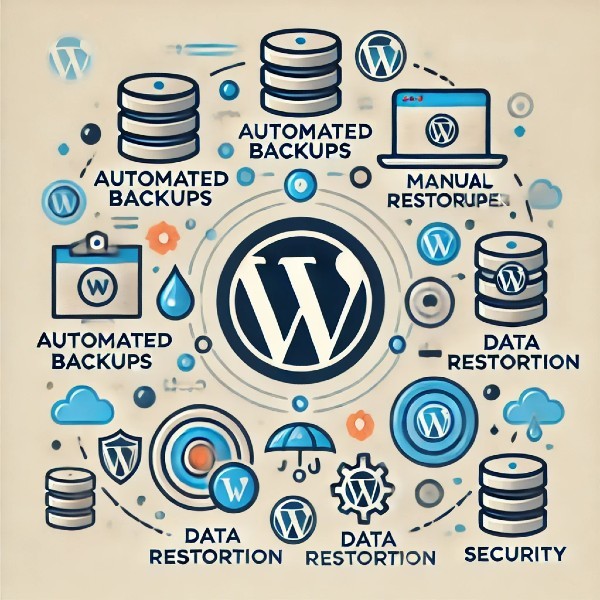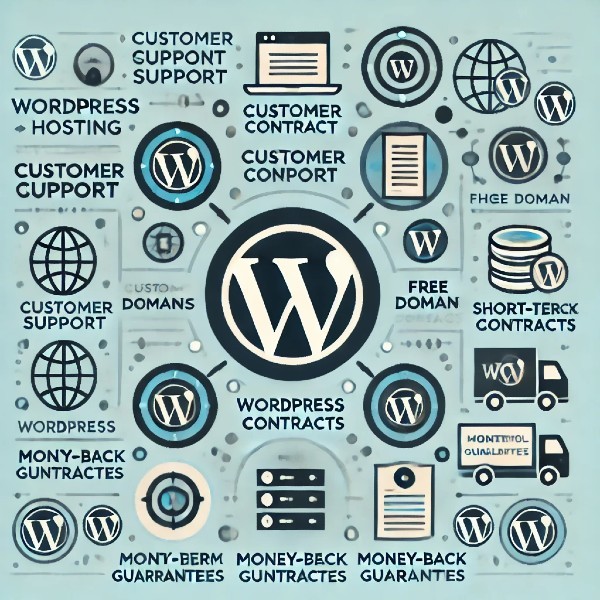Introduction
In today’s digital landscape, scalability is a crucial factor for any online business or website. As web traffic continues to grow and user demands increase, the ability to efficiently manage and expand your HTML hosting capabilities can make or break your online presence. This article will delve into the concept of scalability in HTML hosting, exploring its significance and how it can impact the performance and reliability of your website.
Scalability refers to the capacity of a system to handle a growing amount of work or its potential to accommodate growth. In the context of HTML hosting, scalability ensures that your website remains functional and responsive even as the number of visitors and the complexity of content increase. This is particularly important for businesses expecting fluctuating traffic patterns or planning to expand their online services.
Understanding scalability and implementing scalable solutions can save you from potential downtime, slow page loads, and other issues that could negatively affect user experience. By preparing your HTML hosting infrastructure for scalability, you not only enhance performance but also position your website for future growth and success. This guide will cover essential aspects of scalability in HTML hosting, offering insights and practical advice to help you optimize your website.
What is Scalability in HTML Hosting?
Scalability in HTML hosting refers to the ability of a hosting service to handle increased load and traffic without compromising performance. This means that as your website grows and attracts more visitors, the hosting infrastructure can expand to accommodate the higher demand. Scalability ensures that your website remains fast, reliable, and available to users, regardless of traffic fluctuations.
For example, an e-commerce website during the holiday season may experience a surge in traffic. Without scalable hosting, the site could crash or slow down, leading to lost sales and frustrated customers. However, with scalable HTML hosting, the site can automatically allocate more resources to handle the increased traffic, ensuring a seamless shopping experience for users.
Scalability can be achieved through various means, including horizontal scaling, which involves adding more servers to distribute the load, and vertical scaling, which involves upgrading existing servers to handle more traffic. Both approaches have their advantages and can be implemented depending on the specific needs of the website.
How to Scale Your HTML Hosting Site
Scaling your HTML hosting site involves several strategic steps to ensure your website can handle increased traffic and data loads. One effective approach is to use Content Delivery Networks (CDNs), which distribute your website’s content across multiple servers worldwide. This reduces the load on your main server and speeds up content delivery to users based on their geographic location.
Another key strategy is to optimize your website’s code and resources. Minifying HTML, CSS, and JavaScript files, compressing images, and using efficient coding practices can significantly reduce the server load and improve performance. Implementing caching mechanisms also plays a vital role in scaling, as it stores frequently accessed data, reducing the need to fetch it from the server repeatedly.
Moreover, adopting a scalable database solution is crucial. Traditional databases can become a bottleneck as traffic increases. Solutions like NoSQL databases or cloud-based databases that offer automatic scaling can handle large amounts of data and concurrent requests more efficiently.
Choosing Scalable HTML Hosting
Selecting the right hosting provider is fundamental to ensuring scalability. Look for hosting services that offer flexible plans allowing you to upgrade resources easily. Cloud hosting is an excellent option as it provides on-demand resource allocation and the ability to scale both vertically and horizontally.
Evaluate the hosting provider’s infrastructure and support services. Providers with robust infrastructure, such as Amazon Web Services (AWS) or Google Cloud Platform (GCP), offer powerful tools and services to manage scalability effectively. Additionally, having access to 24/7 technical support ensures that any scalability issues can be addressed promptly, minimizing downtime and maintaining optimal performance.
Ensure the hosting provider offers features like auto-scaling, which automatically adjusts resources based on traffic patterns. This is particularly beneficial for websites with unpredictable or seasonal traffic spikes. Additionally, choose a provider that supports advanced technologies such as containerization and microservices, which can further enhance the scalability and resilience of your hosting environment.
Planning for Traffic Spikes
Traffic spikes, whether predictable or sudden, can put a significant strain on your website’s hosting infrastructure. Planning for these spikes is essential to maintain performance and user experience. One effective strategy is to conduct load testing to understand how your website performs under different traffic conditions. This helps identify potential bottlenecks and areas that need optimization.
Another critical aspect of planning for traffic spikes is implementing auto-scaling solutions. Auto-scaling automatically adjusts the number of active servers based on current traffic, ensuring that your website has enough resources during high-demand periods. Additionally, using load balancers can distribute traffic evenly across servers, preventing any single server from becoming overwhelmed.
An example of a successful traffic spike management strategy can be seen in the case of major e-commerce platforms during Black Friday sales. These platforms often experience massive surges in traffic but maintain performance by using scalable hosting solutions, CDNs, and robust caching mechanisms. By preparing in advance, they ensure a smooth shopping experience for millions of users.
Case Studies: Scalable HTML Hosting Solutions
Several companies have successfully implemented scalable HTML hosting solutions to manage their growing traffic and data needs. One notable example is Netflix, which migrated to a cloud-based infrastructure to handle its massive user base and streaming demands. By leveraging AWS, Netflix can scale resources dynamically, ensuring uninterrupted service even during peak viewing times.
Another case study is Airbnb, which uses a combination of cloud services and microservices architecture to manage its global platform. This approach allows Airbnb to scale individual components of its system independently, providing flexibility and resilience. The use of scalable databases and CDNs further enhances performance and reliability.
These case studies highlight the importance of choosing the right hosting solutions and strategies for scalability. By adopting cloud-based infrastructure, implementing microservices, and optimizing resource management, businesses can achieve significant improvements in performance and user experience.
Future-Proofing Your Website with Scalable Hosting
Future-proofing your website involves anticipating growth and ensuring that your hosting infrastructure can accommodate future demands. One way to achieve this is by using modular and scalable design principles. This approach allows you to add or modify components of your website without affecting the overall system, making it easier to scale as needed.
Additionally, investing in scalable technologies such as containerization and serverless computing can provide long-term benefits. Containers, such as those managed by Docker, allow you to package applications and their dependencies, making it easier to deploy and scale across different environments. Serverless computing, on the other hand, enables you to run code without managing servers, automatically scaling based on demand.
Regularly monitoring and analyzing your website’s performance is also crucial for future-proofing. Using analytics tools, you can identify trends and potential issues, allowing you to make informed decisions about scaling and optimization. By staying proactive and continuously improving your hosting infrastructure, you can ensure that your website remains competitive and capable of handling future growth.
Conclusion
Scalability in HTML hosting is a critical aspect of maintaining a high-performing and reliable website. By understanding what scalability entails and how to implement scalable solutions, you can ensure that your website can handle increased traffic and data loads without compromising performance. From optimizing your website’s code to choosing the right hosting provider, there are several strategies to enhance scalability.
Choosing scalable HTML hosting involves evaluating hosting providers’ infrastructure and support services, selecting plans that offer flexible resource allocation, and implementing advanced technologies like containerization and microservices. Planning for traffic spikes and using auto-scaling solutions can help manage sudden surges in traffic, ensuring a smooth user experience.
Case studies of successful companies like Netflix and Airbnb demonstrate the importance of scalable hosting solutions. By leveraging cloud-based infrastructure, scalable databases, and CDNs, these companies have managed to handle massive user bases and traffic demands effectively. Future-proofing your website with scalable hosting ensures that you are prepared for growth and can maintain optimal performance over time.
In conclusion, scalability in HTML hosting is essential for any website looking to grow and succeed in today’s digital landscape. By implementing the strategies and solutions discussed in this article, you can optimize your website’s performance, enhance user experience, and position your site for future growth. Investing in scalable hosting solutions not only ensures reliability but also provides the flexibility needed to adapt to changing demands and market conditions.
Reference
This article explains the basics of web hosting, including HTML hosting, and offers insights into different types of hosting services available.
2. Bluehost: What is Web Hosting?
A detailed guide on what web hosting is, how it works, and the various types of hosting options, including HTML hosting.
3. SiteGround: Web Hosting Explained
Provides a comprehensive overview of web hosting, its importance, and the different hosting solutions, including HTML hosting.
4. GitHub Pages: Hosting Static Websites
Offers information on how to host static websites using GitHub Pages, a popular choice for HTML hosting.
5. Netlify: Hosting for Static Sites
Details on Netlify’s hosting services, specifically designed for static websites, including those built with HTML.
6. DigitalOcean: How to Host a Website
A series of tutorials on hosting websites, including the steps to set up HTML hosting.
7. Google Cloud: Host a Static Website
Instructions on how to use Google Cloud to host static websites built with HTML.
These references provide additional insights and practical information on HTML hosting, including how to get started, the benefits, and the different hosting options available.








